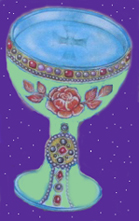Commandeur Adama
Magister Ordo Kolob - Admin

Nombre de messages : 8905
Age : 60
Localisation : Pays de Néphi - Mormon forest
Date d'inscription : 16/02/2007
Chevalier de Kolob - Vers la Sagesse
 A reçu la Lumière: 180 A reçu la Lumière: 180
 En quête du Vase Précieux et Elu: En quête du Vase Précieux et Elu:
    (150/200) (150/200)
 A la recherche du couple de Licornes du Jardin d'Eden: A la recherche du couple de Licornes du Jardin d'Eden:
    (7/700) (7/700)
 |  Sujet: History of Salt Lake County Sujet: History of Salt Lake County  Jeu 17 Jan - 9:59 Jeu 17 Jan - 9:59 | |
|  SALT LAKE COUNTY SALT LAKE COUNTY
Area: 764 square miles; population: 725,956 (1990); county seat: Salt Lake City (also the state capital); origin of county name: from the Great Salt Lake; principal cities/towns: Salt Lake City (159,936), West Valley City (86,976), Sandy (75,058), West Jordan (42,892), Murray (31,282), Kearns (17,000), Midvale (11,886); economy: wholesale and retail trade, manufacturing, services, transportation and communications, finance, mining, construction, tourism, agriculture; points of interest: State Capitol building, Temple Square, Beehive House, Pioneer Trail State Park, Utah Museum of Natural History, Fort Douglas, Hogle Zoo, Liberty Park, Delta Center, Salt Palace Complex, Great Salt Lake, Wheeler Historic Farm, Bingham copper mine, LDS Church Museum of History and Art, Salt Lake Art Center, Utah State Historical Society, ski resorts at Alta, Brighton, Snowbird, and Solitude.
The fertile Salt Lake Valley lies between the Wasatch Mountains on the east and the Oquirrhs on the west. The active Wasatch Fault runs through the eastern part of the county. The Jordan River flows north through the valley to Great Salt Lake, and canyon streams provide culinary and agricultural water and in pioneer times powered mills.
Centuries before white settlement of the area, prehistoric Indian groups and the historic Northern Shoshone and Ute Indians used the area for hunting, fishing, and gathering seasonal foods. The first white men known to see the valley were trappers associated with William H. Ashley in 1824-25.
Permanent settlement began in 1847 with the arrival of the first Mormon wagon train, which included three women and three blacks. The advance company planted the first crops on 23 July, and the pioneers at Brigham Young's direction explored nearby areas, built a fort, and surveyed Salt Lake City. In October 1847 seventeen-year-old Mary Jane Dilworth opened the first school in her tent. In the next two years a dozen towns were founded in the county. With self-sufficiency a major goal, the settlers established basic industries to supply everything from pottery to printing paper. They experimented with mixed success in growing many different kinds of plants, raising silkworms, and refining sugar. The county was temporarily abandoned in 1858 during the Utah War. In 1862 U.S. troops established Fort Douglas to protect overland communications and to watch the Mormons.
Tens of thousands of Mormon immigrants funneled through Salt Lake City to outlying settlements, and, additionally, the city was the last major supply point for thousands of California-bound travelers. As the headquarters of the LDS Church and later the territorial and state capital, Salt Lake City and its county have always been the center not only of Utah's population but also of its political and economic power.
Political diversity came to the county in 1870 with the founding of the non-Mormon Liberal party. Until statehood in 1896 the Mormon-Gentile conflict was intense. Industrial development in the late nineteenth and early twentieth centuries brought ethnic diversity with the arrival of many southern and eastern Europeans, blacks, Chinese, Japanese, and Mexicans. The migration of Native Americans to the larger cities and the recent immigration of southeast Asians and others continue the trend.
Although cities and suburbs now cover much of the land, the county retains traces of its agricultural beginning as a producer of eggs, hogs, wheat, and garden vegetables. Mines in Alta and Bingham, smelters in Garfield and Murray, and the Salt Lake Mining and Stock Exchange made the county a regional mining hub. Printing and publishing, which began in 1850, continue as major industries. Other important manufactured goods include pharmaceuticals, candy and other food products, computers, military guidance systems, and artificial organs. The county also remains the state's leader in trade, services, transportation, communications, finance, insurance, and construction. Salt Lake International Airport, major medical facilities, and television broadcasting, for example, serve the state as a whole as well as parts of the Intermountain region.
Government, including public education, is the leading employer in the county. The founding of the University of Desert (Utah) in 1850 and the dedication of the Salt Lake Theatre in 1862 provide two examples of the early commitment of residents to education and culture. The county is home to several public and private colleges and dozens of theatrical, musical, and dance organizations, as well as major professional sports clubs.
Miriam B. MurphySource : http://www.onlineutah.com/saltlakecountyhistory.shtml | |
|

